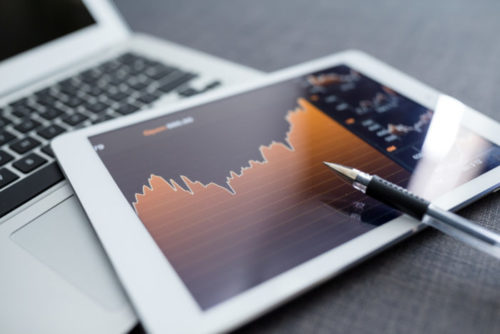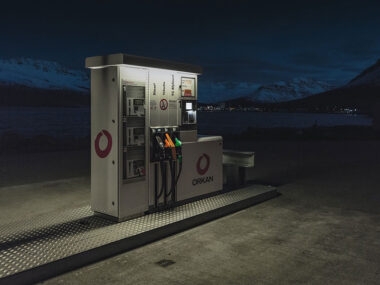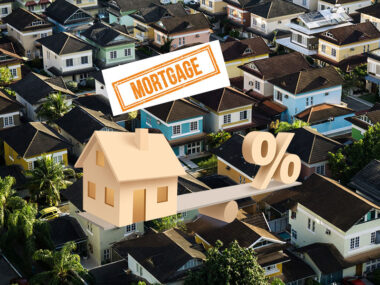A Goldilocks economy describes periods of stable economic growth. During such times, growth is gradual enough that inflation remains low, and the Federal Reserve does not feel the need to increase interest rates. Or, they may increase rates incrementally.
From a business and stock market perspective, a Goldilocks economy provides the ideal conditions for profitability and growth.
This unusual name comes from the well-known children’s story “Goldilocks and the Three Bears.” As you probably know, the plot of this fable revolves around the search for porridge that is neither too hot nor too cold.
For investors, a market that is neither too hot nor too cold brings steady, reliable profits without unexpected fluctuations.
The opposite of a Goldilocks economy would be an economic recession or even a depression. A recession occurs when the economy has a negative GDP for two quarters (six months) in a row, and a depression is a recession that lasts for two years (or more) or includes a GDP drop of 10% or more.
To understand when economic conditions are ideal, you need to look closely at current financial circumstances, economic metrics, and market activity.
Table of Contents
What Is a Goldilocks Economy?
What are the conditions that make the economy neither too hot nor too cold? This situation requires steady growth of stock prices and other assets, low unemployment, low interest rates, minimal inflation, and steady growth in terms of macroeconomic indicators such as gross domestic product (GDP).
During a Goldilocks economy, the GDP should be growing by less than 4%. If the economy grows much faster than that, there is a risk of an economic bubble. The bubble could burst, causing an economic downturn or recession.
Also, unemployment should be below the average for the U.S., which expects unemployment claims that average 5.74%. During a Goldilocks period, unemployment can dip below 4%.
Assets also increase in value. The average annual growth for significant indexes such as the S&P 500 is just under 10% per year. The market does fluctuate, but indexes should beat the average over several months or one year during a Goldilocks economy.
Rather than spikes and dips, the market moves upward more steadily than usual during a Goldilocks economy.
Interest rates get set by the Federal Reserve (known as the Fed in financial circles). Interest rates and ideal inflation rates can vary depending on other economic factors.
The Fed targets 2% as the perfect inflation rate. The goal of setting a low (but not too low) interest rate is to keep inflation around 2%.
Since the Fed uses interest rates to keep inflation in check, an increase in interest rates can signal that inflation is rising above ideal rates.
How Is a Goldilocks Economy Maintained?
The federal government can change policy, budget plans, tax rates, or regulatory laws to help bring about or maintain a Goldilocks economy. The Federal Reserve plays an essential role in the process by setting and changing interest rates.
The goal is always to find the right balance between economic growth and stability. In a sense, the Fed’s main focus is using interest rates to maintain or bring about a Goldilocks economy.
The federal government can also take steps to maintain a Goldilocks economy. They can create infrastructure projects or offer tax incentives to businesses to inspire them to increase their hiring and spending. The desired result is the creation of more jobs, an uptick in the GDP, and increased spending throughout the economy.
Governments can also offer tax breaks to consumers as a way to increase spending.
Like the Federal Reserve’s need to balance interest rates and economic expansion, the government needs to temper tax breaks, incentives, and other policy changes. Too much spending or too many incentives can cause rapid inflation.
If inflation gets out of hand, these policies would have the opposite of the desired effect.
Causes of a Goldilocks Economy
The causes of a Goldilocks economy include sound economic policy and action from the Federal Reserve. However, many other factors influence the creation of a Goldilocks economy.
Because of international supply chains and modern globalization, the policies of other governments and central banks can affect the economic situation in the U.S. Lower tariffs or trade deals may help cause a goldilocks economy by encouraging growth. However, governments can also use taxes and policies to create balanced growth.
In some cases, the Goldilocks economy occurs during a natural business cycle. Economists usually say that this cycle has five components: expansion, peak, recession, trough, and recovery. Conditions for a Goldilocks economy are in place at the beginning and end of this cycle during expansion and recovery.
Effects of a Goldilocks Economy
The effects of a Goldilocks economy are most evident for businesses and investors. Investors can feel confident about the return on their investment because markets are growing at a rate that is faster than usual, but not so fast that investors fear a drawback. This dynamic can be true for stocks, bonds, real estate, and other investment vehicles.
Businesses likewise expand and develop at a steady pace during a Goldilocks period. Some may take advantage of tax breaks or regulatory changes that the government instituted to bring about the Goldilocks economy.
Because of low unemployment, more people have jobs, and consumer spending increases. Also, since investment returns are above average, retirement investment accounts rise in value.
Goldilocks Economy Examples
There are examples of Goldilocks economies throughout U.S. history.
In the mid to late 1990s, the U.S. experienced low unemployment rates for nearly four years. Despite predictions and economic forecasts to the contrary, inflation remained low, and the Federal Reserve kept interest rates near zero.
During this time, Economist David Shulman first used the phrase “Goldilocks economy.” However, conditions of a Goldilocks economy have existed at various times throughout history.
Between 2003 and 2005, the economic recovery from the downturn caused by 9/11, wars in Iraq and Afghanistan, and the so-called tech bubble — spurred by government tax cuts — led to a period of low unemployment, stock market gains, and low inflation, which led to a Goldilocks period.
In 2014 and 2015, low commodity prices and modest interest rates created an ideal climate for investors and job seekers. Some economists trace this trend back to the regulatory rules and economic changes following the financial crash of 2008 and 2009.
Regulatory rollbacks, tax cuts, and low inflation rates, coupled with lowered interest rates, helped create a Goldilocks economy in 2018 before the global pandemic in early 2020 wiped out those gains.
Image Source: https://depositphotos.com/





